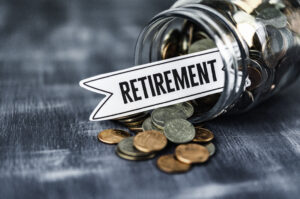
‘Volatile’ Market: Should you change 401(k) contributions?
By onAssociations | Market Trends
Vanguard reports that as the market tanked last year the majority of Americans didn’t withdraw from their 401(k)s or change their investments. Virginia Asset Management Partner and Financial Advisor Coley Eckenrode told Repairer Driven News that’s the best route to take when saving for retirement.
“When you’re accumulating assets towards retirement, meaning deferring money, a great time to continue is when we’ve had market declines,” Eckenrode said. “If mutual fund XYZ was trading at $100 a share January of 2022, and through the course of the downturn last year, ended the year at $80 a share if you continue to invest then the same $500 that you were putting in per month bought more shares as the share price declined throughout the course of the year. As markets recover, you’re going to own more shares and thus have a more compound impact on the recovery side. …it’s a great time to continue to invest, not refrain from investing.”
In a preview of Vanguard’s “How America Saves 2023” report, the investment management company said 6% of investors in self-directed retirement accounts traded last year — the lowest level in more than two decades.
Barron’s called the 2022 market “the worst market since 2008” with S&P’s 500 losing nearly 20%, U.S. bonds dropping nearly 13%, and most retirement target-date funds, which adjust their mix of stock and bonds as the owner approaches retirement, fell somewhere in between.
Vanguard found that 40% of savers increased their deferral rate and the use of professionally managed allocations increased to 66%, up 2 percentage points from year-end 2021.
“While average account balances decreased by 20% in 2022, primarily driven by negative market performance, participant behaviors mostly remained positive,” the preview states. “Nearly 4 in 10 participants increased their deferral rate (either on their own or as part of an automatic annual increase), in line with previous years. …more than 97% of participants did not take a hardship withdrawal during this challenging year. This data underscores that participants are generally resilient and maintain a long-term approach to retirement savings, even during uncertain economic times.”
Fifty-nine percent of plans with an automatic enrollment design defaulted their employees into the plan at a rate of 4% or higher, according to Vanguard, which is a trend that the company says has continued to increase every year. Also, nearly 7 in 10 plans automatically enrolled employees into an annual deferral percentage increase.
Vanguard’s full report will be available in June.
“401(k)s are earmarked for retirement, or should be, thus the time horizon for most people is long-term and thus market volatility is your friend and a benefit when you’re in the accumulation phase, meaning accumulating assets for retirement,” Eckenrode said. “It’s your enemy when you’re distributing assets. …the worst thing to do is to change your investment mix or stop deferring or reduce what you’re deferring.”
Eckenrode helps manage the Society of Collision Repair Specialists (SCRS)’ 401(k) Multiple Employer Plan (MEP). Plan advisors have already completed the legwork of interviewing plan providers, coming up with a plan, and spending time to reach law compliance.
A perk of the SCRS plan is several companies are in one plan so the total plan balance and the number of employees are higher, according to Eckenrode. And it’s already been negotiated that as certain benchmarks are met, such as the number of dollars or participants, employees will see price reductions.
The vision of the plan is to help participating businesses and employees save expenses relevant to their 401k balances, reduce administrative responsibilities for companies, and provide fiduciary support, according to SCRS.
Eckenrode noted that this year is also a good time to be contributing more money because total contribution amounts allowed for the year increased from $20,500 to $22,500 for savers under the age of 50 and the catch-up for those over 50 increased from $6,500 to $7,500, meaning if you’re over 50 you can contribute $30,000 this year.
“Tax-wise, as far as deferrals, putting money into a 401(k) is a great resource to reduce your tax liability in the year that you defer money because it’s a pre-tax contribution,” he said. “That’s the other benefit of continuing to contribute, and even increasing contributions, is you get the benefit of the tax reduction for the dollars that you put in.”
However, it’s the opposite when it comes to withdrawing from a 401(k). Outside of certain qualification requirements, distributions from a 401(k) are taxable income and a 10% penalty could be imposed if money is taken out before age 59.5 unless eligible withdrawal options are met to bypass that, Eckenrode said.
Vanguard found that non-hardship withdrawals last year were generally in line with 2021 activity, while hardship withdrawals increased throughout the year to 2.8% of participants, up from 2.1% in 2021.
Images
Featured image credit: CatLane/iStock
